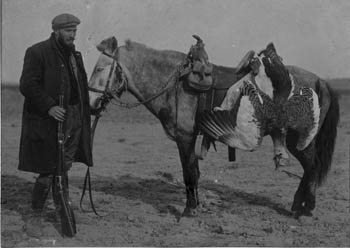
June 16–September 16, 2012
THE naturalist
One of the expedition’s key objectives was collecting wildlife specimens, and the young naturalist Arthur de Carle Sowerby (1885–1959) led this effort. Born in Shanxi province to missionary parents, Sowerby was at the beginning of a long and distinguished career in China. The Loess Plateau, Ordos Desert, and the semi-arid mountains of Shanxi, Shaanxi, and Gansu are home to many distinct ecosystems, and the animals collected by the expedition team remain important evidence of the region’s biodiversity.
Over three hundred animal specimens were collected, examined, prepared, and sent to the Smithsonian Institution, where they became some of the earliest examples of northern China’s diverse wildlife available for study in the United States. Eleven of the animal species collected by the team were later identified as new to science. A number of insect specimens were also collected and sent to the British Museum. Publication of these new finds quickly appeared in scientific journals, and introduced this data to a more general audience. The expedition recorded its progress and accomplishments through field notes, photographs, and diaries. As the expedition’s naturalist, Sowerby was responsible not only for collecting and preparing the animal specimens but also for writing the accompanying field notes—all of which he sent to the Smithsonian. His post-expedition duties included organizing the photographs and illustrations for Through Shên-kan.



